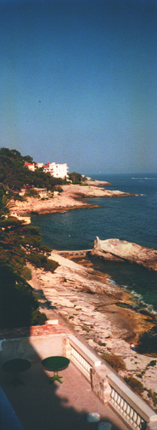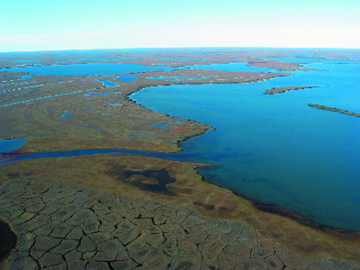Every month, we'd like to feature one of your photos from anywhere in the world and invite other readers to guess where it was taken. Look every month in the print Geotimes for a new photo. Following are clues, answers and winners from past issues.


| Do you have slides and photos you've
collected from field work or vacations? Every month, we'd like to feature one of your photos from anywhere in the world and invite other readers to guess where it was taken. Look every month in the print Geotimes for a new photo. Following are clues, answers and winners from past issues. |
 |
| Send answers for the October 2004 Where on Earth?
contest, which appears in the print magazine, to Geotimes by October
30 (or postmarked by this date). From those answers, Geotimes staff
will draw the names of 10 people who will win Where on Earth? T-shirts.
And from those 10 names, we will draw the names of two people who will win
a Brunton compass.
Click here
to submit a guess for this month's Where on Earth?
contest. Submit
photos for Where on Earth? |

|
Clues: 1. Between one of the world’s highest mountain chains and a sea, this narrow region extends through three countries in just a few kilometers. 2. The average annual temperature is 16 degrees Celsius, with rain falling on average fewer than 60 days per year, and the sun shining 7 hours per day. 3. Blood-red sandstone cliffs are famous throughout, but in the area’s native language, the region is actually named for the stunning color of its water.
Name the region. Scroll down for the answer |
| Answer: Check back later this month for the winners of the October Where on Earth? |

|
Clues: 1.This lake is part of the largest block of publicly owned land in its
host country, and is home to nesting habitats for thousands of loons,
ducks, geese and swans, as well as a large mammalian herd. 3. In a native tongue, the name of this lake refers to its considerable
size. Name this lake and its location. Scroll down for the answer |
| Answer: Teshekpuk Lake is located on Alaska’s North Slope in the National Petroleum Reserve-Alaska. “Teshekpuk” means “the largest lake of all” in the native Inupiat tongue. This vast network of wetlands provides calving grounds for caribou as well as homes for numerous birds. Photo courtesy of the Bureau of Land Management, Alaska. |
October 2004 Winners
1. Jerry Brown (Woods Hole, Mass.)
2. R. Morgan Button (Cincinnati, Ohio)
3. Helen Delano (Middletown, Pa.)
4. John Gallway (Menlo Park, Calif.)
5. David Lindberg (Eureka, Calif.)
6. Mike Mitchell (Anchorage, Alaska)
7. David Munoz (McKinleyville, Calif.)
8. Rick Saltus (Denver, Colo.)
9. David Stanley (Anchorage, Alaska)
10. David Swanson (Baker City, Ore.)
 |
Geotimes Home | AGI Home | Information Services | Geoscience Education | Public Policy | Programs | Publications | Careers |